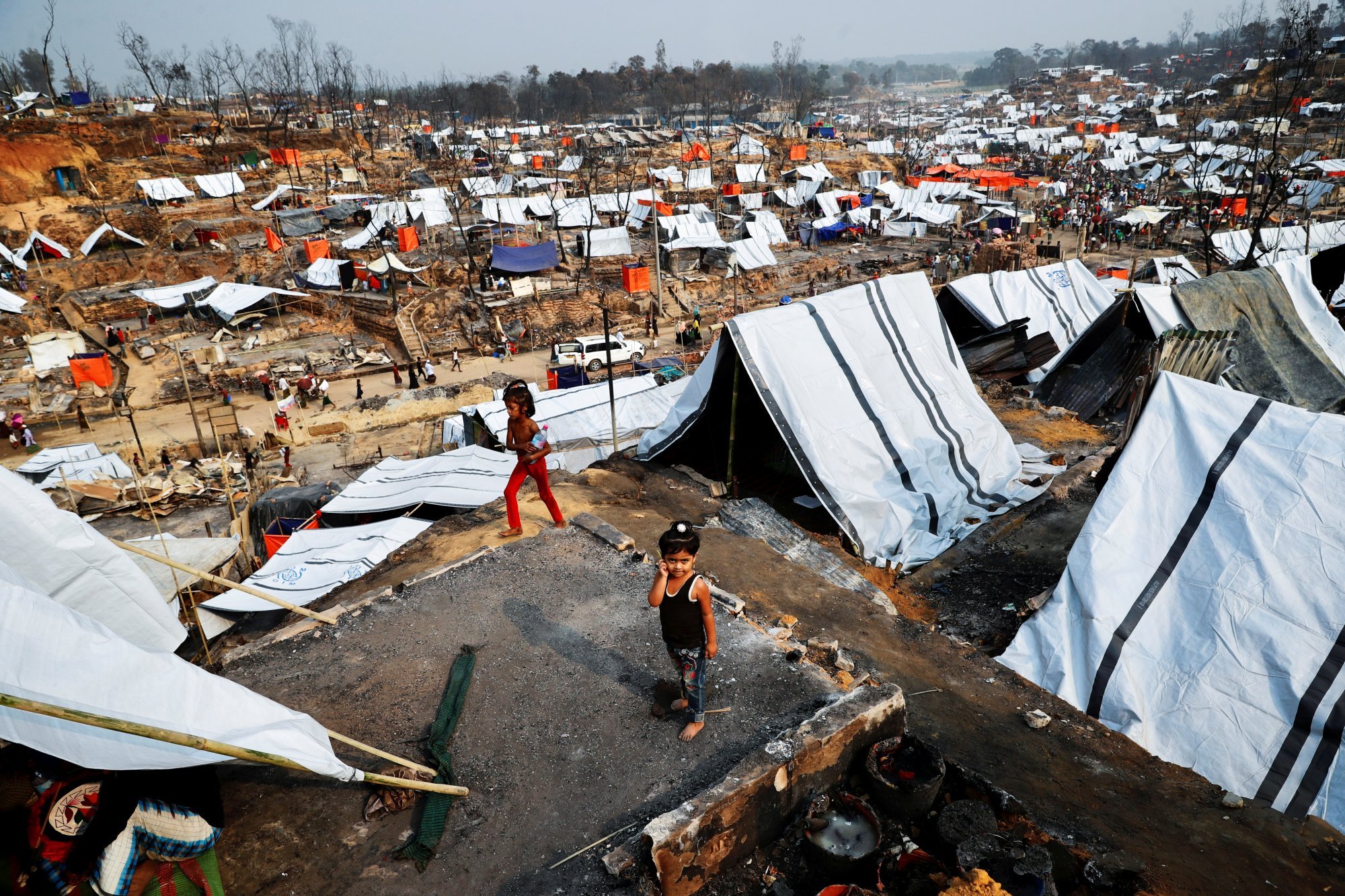In Bangladesh, climate dangers menace ‘extremely vulnerable’ Rohingya refugee camps

[ad_1]
Bangladesh has opened its borders to the refugees, but policies including the requirement that they live in temporary shelters means they are less protected from monsoons and cyclones, Jing Song, senior operations coordinator for the UN High Commissioner for Refugees (UNHCR), told This Week in Asia.

“The Bangladesh government’s position is that the only solution for the Rohingya crisis is that they have to return to Myanmar, so all the infrastructure in the camps has to remain temporary,” Song said in an interview last month.
‘Guests in our own land’: Rohingya in refugee camps won’t return to Myanmar
‘Guests in our own land’: Rohingya in refugee camps won’t return to Myanmar
Some 40,000 refugees’ shelters were either damaged or completely destroyed by the cyclone. Song said many large fires also broke out around the same time, with almost 3,000 shelters wiped out by a blaze in May that killed 11 people and resulted in the displacement of around 16,000 others.
“These extreme weather conditions leave Cox’s Bazar extremely vulnerable,” Song said, stressing the importance of putting in place a climate action plan to reduce the impact.
“We are setting up disaster response teams, with volunteers among the refugees,” she said, both to increase engagement with the community and to prepare them to respond to fire and cyclone emergencies.
Other steps being taken include monitoring the government’s cyclone alert systems, and establishing evacuation and relocation procedures for those who are most vulnerable, such as disabled or elderly refugees.
Extreme weather events often destroy or weaken shelters in the refugee camps, requiring constant maintenance and rebuilding work.
“Every year, [the UNHCR] spends millions of dollars on this maintenance, which is also not sustainable,” Song said. But finding a more effective solution has proved a challenge given the Bangladesh government’s ban on allowing refugees to build concrete homes.
This year also saw budget cuts that forced the UN World Food Programme to steeply reduce humanitarian aid to the Rohingya camps, with rations now US$8 per refugee monthly, down from US$12 at the start of the year. The refugees are not allowed to legally take up work, so most are completely at the mercy of these rations.
“They’re fully dependent on humanitarian aid and the resources we provide are not sufficient,” Song said. “So we are trying to find ways to help them to get additional food.”
These include building structures near households that provide refugees with a small garden space to plant vegetation. Sometimes this is done on top of an existing shelter, Song said, to save space and provide an extra layer of protection from the hot sun, as the bamboo roofs on shelters are not very weather resilient.

Liquefied petroleum gas containers are distributed to refugees for their cooking needs, to reduce reliance on firewood from nearby forests, and efforts are also being made to ensure sanitation and waste management through community-centred management, Song said.
UNHCR and volunteers work to ensure that drains and streams are kept clean, and that good hygiene practices are implemented.
‘We want to go home’, plead Rohingya in Bangladesh 6 years after exodus
‘We want to go home’, plead Rohingya in Bangladesh 6 years after exodus
This is of particular importance as Bangladesh faces its worst dengue outbreak on record, according to official figures, with more than 1,000 people dying from the mosquito-borne disease since January, also worsened by a prolonged monsoon this year.
“So many people living [in the camps] are still in a difficult situation, we can only put in place these measures and environmental projects to minimise the impact of the climate events and natural disasters,” Song said.
[ad_2]
Source link






